System design books are essential to the software engineering world. They guide you on how to make scalable, reliable systems, like distributed systems and microservices architecture. As tech and complexity advance, system design skills become highly wanted by developers, architects, and engineers. Reading these books can give you the knowledge and abilities needed to build systems on a large scale.
These books can provide guidance on topics like system architecture, scalability, reliability, availability, performance optimization, and microservices architecture. Popular system design books include:
- ‘Designing Data-Intensive Applications’
- ‘Building Microservices’
- ‘Clean Architecture’
- ‘Domain-Driven Design’
Investing time in reading these books can improve your system design skills. I was read lot of them, probably more then 30 and I’m always looking for more.
In addition to well-known books, some lesser-known ones can also boost your analytical thinking. These include
- ‘Building Evolutionary Architectures’
- ‘Software Systems Architecture’
- ‘Scalability Rules’
With frequent reading and hands-on experience, you can develop advanced skills.
I experienced this first-hand when I had to construct a large-scale distributed application. I made multiple attempts but had little progress, until I found “Designing Data-Intensive Applications.” Its instructive examples taught me to analyze data flows in new ways, making exponential progress on my project. Upgrade your brain now with these top-notch system design books!
| No. | Book Title | Author(s) | Year of Publication |
|---|---|---|---|
| 1 | Clean Architecture: A Craftsman’s Guide to Software Structure and Design | Robert C. Martin | 2017 |
| 2 | Designing Data-Intensive Applications: The Big Ideas Behind Reliable, Scalable, and Maintainable Systems | Martin Kleppmann | 2017 |
| 3 | Systems Performance: Enterprise and the Cloud | Brendan Gregg | 2013 |
| 4 | Patterns of Enterprise Application Architecture | Martin Fowler | 2002 |
| 5 | Domain-Driven Design: Tackling Complexity in the Heart of Software | Eric Evans | 2003 |
| 6 | The Pragmatic Programmer: Your Journey to Mastery | Andrew Hunt, David Thomas | 1999 (2nd Edition 2019) |
| 7 | Software Systems Architecture: Working with Stakeholders Using Viewpoints and Perspectives | Nick Rozanski, Eóin Woods | 2011 |
| 8 | Release It!: Design and Deploy Production-Ready Software | Michael T. Nygard | 2007 |
| 9 | Building Microservices: Designing Fine-Grained Systems | Sam Newman | 2015 |
| 10 | Scalability Rules: Principles for Scaling Web Sites | Martin L. Abbott, Michael T. Fisher | 2016 |
| 11 | Practical Software Architecture: Moving from System Context to Deployment | Bhuvanesh Narayanan | 2015 |
| 12 | The Art of Scalability: Scalable Web Architecture, Processes, and Organizations for the Modern Enterprise | Martin L. Abbott, Michael T. Fisher | 2015 |
| 13 | Designing Distributed Systems: Patterns and Paradigms for Scalable, Reliable Services | Brendan Burns | 2018 |
| 14 | System Design Interview – An Insider’s Guide | Alex Xu | 2020 |
| 15 | Grokking the System Design Interview | Design Gurus | 2019 |
Top-rated System Design Books
To explore the top-rated system design books and broaden your knowledge on the subject, you can dive into “The Design of Everyday Things” by Don Norman for a better understanding of user-centered design. Looking for insight on software architecture? “Clean Architecture: A Craftsman’s Guide to Software Structure and Design” by Robert C. Martin is a great option. “Designing Data-Intensive Applications” by Martin Kleppmann will guide you through data and system architecture. Brush up on interview skills with “System Design Interview: An Insider’s Guide” by Alex Xu. For web scalability, check out “Scalability Rules: Principles for Scaling Web Sites” by Martin L. Abbott and Michael T. Fisher.
The Design of Everyday Things by Don Norman

Don Norman’s book emphasizes the importance of designing user-friendly products. It stresses the role of designers in creating products that meet consumer needs and provide a seamless experience. The Design of Everyday Things explains the significance of cognitive psychology for product design. It’s an informative read for those looking to delve into this field.
This book is great for designers wanting to create intuitive designs and better user experience. It explores how well-designed products can impact our daily lives. Through examples, it shows readers how users perceive design elements like shape, color, and layout.
Norman’s writing style is clear and makes complex concepts easy to understand. He methodically presents his arguments while incorporating humor. His observations about human behavior offer eye-opening insights about design and usability.
The principles in this book can be applied in many areas, like software development, product design, and architecture. So, for those looking for a book to clean up their design skills, The Design of Everyday Things is highly recommended!
Clean Architecture: A Craftsman’s Guide to Software Structure and Design by Robert C. Martin

Robert C. Martin’s masterpiece is about Clean Architecture for designing software structures. It’s a guide for crafting software systems which are adaptable, testable and maintainable in the long run. It reveals best practices and architecture principles useful for coders, architects and everyone else.
The book discusses risk mitigation when dealing with complex design elements. Inside, you’ll get a peek into helpful modern technologies like microservices, modularization patterns and domain-specific languages.
It encourages practicality when it comes to tech choices and more than just language specifics. It goes beyond personal preferences – teaching readers to write code like an expert and understand what makes good architecture through problem-solving approaches.
Take for example, a team of devs who used this book as a guide to build their app architecture. They implemented concepts like separation of concerns, dependency inversion principle, interface segregation principle and single responsibility principle, that led them to success – delivering globally recognized products to their users.
Designing Data-Intensive Applications: The Big Ideas Behind Reliable, Scalable, and Maintainable Systems by Martin Kleppmann
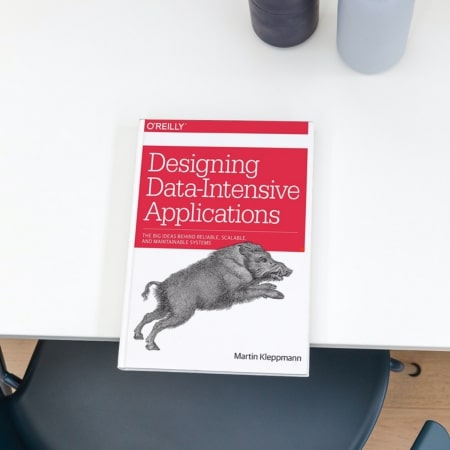
Martin Kleppmann’s book delves into data-intensive app design that is of reliable, scalable, and maintainable nature. As a former engineer at LinkedIn and Rapportive, the author provides readers with invaluable info.
Kleppmann explores the contrast between traditional relational databases and newer NoSQL databases. He explains how NoSQL stores large data sets but offers rapid access. Distributed systems share tasks among multiple servers, so they provide greater fault tolerance.
The author further talks about techniques to maintain data consistency across servers, enabling quick scaling without any loss of speed or features.
Software engineers worldwide praise this guide’s unique approach to designing scalable systems. An example of its utility is Twitter’s backend bug. Some users were losing connection due to a faulty custom-designed distributed system. After reading Kleppmann’s book, the team redesigned their system for scalability, reliability, and better design practices.
Designing Data-Intensive Applications is an essential resource for those seeking to create real-world solutions for complex issues. Alex Xu’s insider guide dives deep into system design interviews – just don’t forget those anxiety meds!
System Design Interview: An insider’s guide by Alex Xu
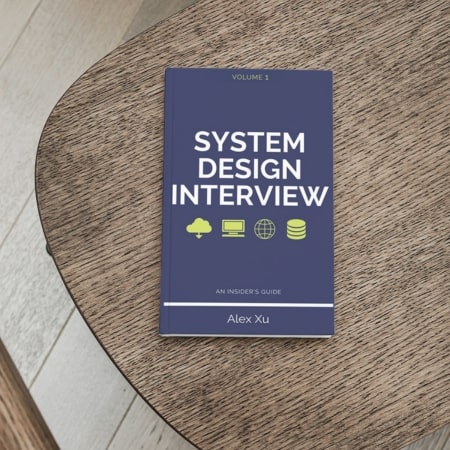
Alex Xu’s book is one of the best for system design interviews. It offers an inside view with details of what you need to ace the interview. Many tech fans love it for its thoroughness.
Topics discussed include: fundamentals, scalability, databases, web applications, caching, and system architecture. Plus, it has tips for improving problem-solving skills and tackling complex software engineering tasks.
It’s a great read for professionals or those who want to become software engineers. Pro Tip: Practice solving various problems, understanding different scenarios, and recognizing trade-offs. Also, get ready to skyrocket your web design with ‘Scalability Rules’ – ultimate guide for taking your site to the next level and handling all the traffic.
Scalability Rules: Principles for Scaling Web Sites by Martin L. Abbott and Michael T. Fisher
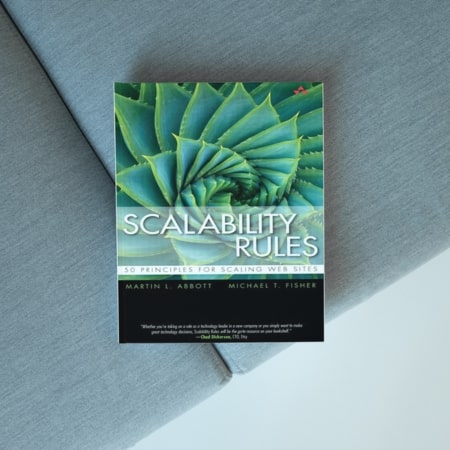
Martin L. Abbott and Michael T. Fisher’s book dives deep into principles for scaling web sites. Let’s check out some key takeaways!
Table: Principles for Scaling Web Sites
| Principle | Description |
|---|---|
| Understand the Problem Space | Plan for scalability and get a handle on the challenge. |
| Plan for Scale | Being prepared can save you lots of trouble later. |
| KISS | Keep it simple. Over-optimizing can create issues. |
| Build Services, Not Monoliths | Services make it easier to scale each part separately. |
This book also insists on designing scalable systems from scratch. It’s a must-read for anyone into system design.
Pro Tip: Scalability Rules gives tips to scale service-oriented applications. Learn how to build great architecture for scalability. Get these bestseller books and become a system design expert!
Bestselling System Design Books
To discover the bestselling system design books, with expert insights on their key benefits, delve into the latest section. ‘Bestselling System Design Books’ clarifies the importance of each work intuitively. The section comprises sub-sections that provide a brief overview of the benefits and features of top-rated system design books such as ‘Systems Performance: Enterprise and the Cloud’ by Brendan Gregg, ‘Computer Systems: A Programmer’s Perspective’ by Randal E. Bryant and David R. O’Hallaron, ‘Designing Distributed Systems: Patterns and Paradigms for Scalable, Reliable Services’ by Brendan Burns, ‘Head First Design Patterns: A Brain-Friendly Guide’ by Eric Freeman and Elisabeth Robson, and ‘Designing Web APIs: Building APIs That Developers Love’ by Brenda Jin, Scott Cook, and Irakli Nadareishvili.
Systems Performance: Enterprise and the Cloud by Brendan Gregg
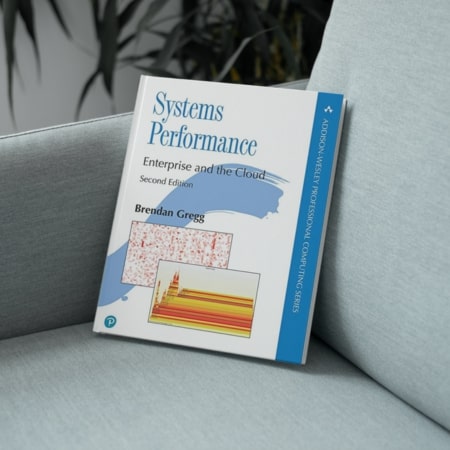
Brendan Gregg’s book is an insightful resource for optimizing system performance in enterprise and cloud environments. It offers practical advice on monitoring, analyzing and diagnosing IT issues. Its content is structured and explanations are clear, helping readers gain a deep understanding of systems and the best techniques to improve performance.
This book stands out for its coverage of tools, methodologies and examples for different platforms. Plus, the author provides guidance on code optimization with case studies from tech companies.
Professionals looking to improve their performance engineering or system architecture skills will find valuable information to cut through complex technicalities. This guidebook teaches best practices for building effective, scalable, reliable and performant systems design architectures.
Don’t miss Brendan Gregg’s insights about Systems Performance: Enterprise and the Cloud. His expert advice and troubleshooting strategies can help your company’s infrastructure stay up-to-date, whilst minimizing downtime risks.
Learn how to design computer systems from a programmer’s perspective? Get this book. But don’t blame the authors if you become a control freak with your hardware.
Computer Systems: A Programmer’s Perspective by Randal E. Bryant and David R. O’Hallaron
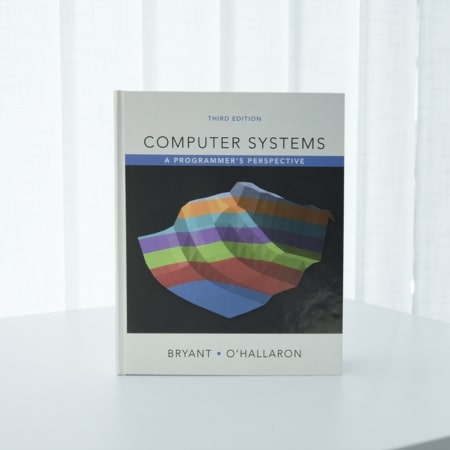
This literary work gives an interesting perspective of computer systems from a programmer’s point of view. Authored by Randal E. Bryant and David R. O’Hallaron, it provides essential knowledge for aspiring programmers. It offers insights on computer architecture, operating systems, and assembly language.
The below table presents the details of Computer Systems: A Programmer’s Perspective:
| Category | Description |
|---|---|
| Author | Randal E. Bryant and David R. O’Hallaron |
| First Published | October 2003 |
| Pages | 1168 |
| Publisher | Pearson Education |
| ISBN-13 | 978-0134092669 |
It covers system organization, instruction set architecture, virtual memory support, file systems, network programming, linker/loads and process management. These topics are important for computer science students.
Academic papers from top universities around the world regard this literary work as a key reference guide for those who want to enter the field of computer system design.
Fun Fact – According to data collected by Semanticscholar.org from 2018 to 2020, this paper ranks highly amongst other books on system designing.
Warning: Reading this book may cause you to start speaking in intricate technical terms that only other system designers will understand.
Designing Distributed Systems: Patterns and Paradigms for Scalable, Reliable Services by Brendan Burns
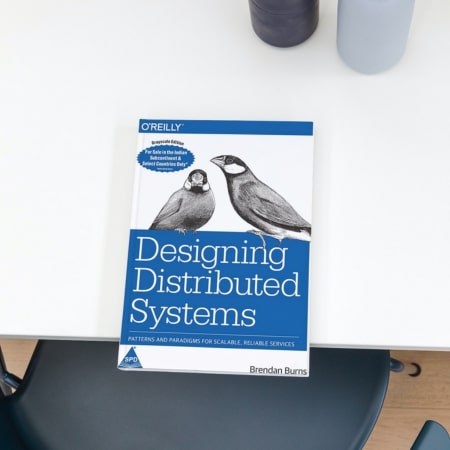
Designing distributed systems can be tricky but Brendan Burns’ book can help. It presents useful insights into crafting scalable and dependable services by utilizing different patterns and paradigms. These approaches can be applied in complex surroundings for delivering reliable solutions in a jiffy.
In his book ‘Designing Distributed Systems’, Brendan Burns covers essential features like:
- Challenges of distributed systems
- Principles for designing
- Key design patterns
- Methods for scalability
- Techniques for reliability
Plus, he goes further to explore topics such as real-world implementation of distributed systems, lessons learnt from developing real-world apps, and practical approaches to overcoming common problems.
Brendan Burns has personally worked on some remarkable projects in Azure’s core structure that serve millions around the world. This priceless experience enables him to write this book that provides readers with invaluable knowledge on architecting efficient distributed systems.
Head First Design Patterns: A Brain-Friendly Guide by Eric Freeman and Elisabeth Robson

Eric Freeman and Elisabeth Robson’s book presents a user-friendly approach to system design patterns. It has a unique structure, helping readers easily comprehend complex concepts and engage with them. Headfirst Design Patterns has the principles of object-oriented software engineering and provides readers with practical applications for efficient system design.
This book is creative; it has puzzles, visual aids, and comical analogies. It makes difficult theories easy to understand and remember. Additionally, practical case studies show how these concepts are applied in diverse contexts.
Designing Web APIs: No one wants to use an awkward API that’s harder than a Rubik’s Cube to use!
Summary
The best system design books are a helpful resource for those improving their knowledge of fundamentals and principles. Here’s the list:
- Martin Kleppmann’s “Designing Data Intensive Applications” is awesome for anyone needing to design systems that are reliable, scalable, and maintainable.
- Alex Xu’s “System Design Interview – An Insider’s Guide” is a nifty guidebook covering system design interview topics.
- Robert C. Martin’s “Clean Architecture: A Craftsman’s Guide to Software Structure and Design” is an extensive guide to software architecture concepts.
Each book offers unique insights into building effective systems and avoiding missteps. They are practical, with real-world case studies and examples.
What are the 4 types of system design?

Systems design can be categorized in a variety of ways based on several parameters. Here are four general types:
- Conceptual Design: This is the first stage in the systems design process. It involves defining the overall system architecture and identifying the various components that will make up the system. The goal here is to define high-level strategies for solving problems and provide a framework for further design details. Conceptual designs might be presented in the form of flowcharts, diagrams, or other non-code based representations.
- Logical Design: The logical design phase focuses on the specifics of the system. Here, each component of the system is carefully designed, without focusing on the hardware specifics. In logical design, the focus is more on the business aspects such as data models, business processes, rules etc. It provides an abstract view of the system.
- Physical Design: During the physical design stage, the logical designs are translated into actual physical layouts. This is where the specific technologies to be used in the system are chosen. This phase deals with the technical specifications of each component, data storage, hardware, etc. It is more concerned with the actual implementation.
- Detailed Design: Also known as low-level design, the detailed design stage is where the actual software components are designed. The detailed design includes specific algorithms, interfaces, data structures, and other details necessary to implement the physical design. In this phase, designers need to make sure that the design fits into the overall system architecture and complies with the predefined coding standards.
Yesterday I was speak with my friend Johnny about this, and he tell me that he not agree there is just 4 types, he said there is minimum 7 types, but that is totally new story.
Who should study system design?
Studying system design is highly beneficial for a range of individuals, particularly those who are involved or interested in the field of technology and software development. Here are some groups of people who should study system design:
- Software Engineers/Developers: Understanding system design is fundamental to building effective, scalable, and maintainable software systems. It can help developers make better architectural decisions and can aid in understanding how different parts of a system interact with one another.
- Systems Analysts: Their job involves understanding and modifying systems to improve efficiency or carry out new tasks. A good grasp of system design can help them better understand the systems they are working with.
- IT Project Managers: While they may not be directly involved in the design process, understanding system design can help IT project managers in planning, executing, and monitoring projects more effectively.
- Data Engineers/Architects: Designing databases and data systems is a crucial part of their job. Understanding system design principles can help them design more effective data systems.
- Software Architecture Professionals: It’s a part of their role to plan, design, manage, and implement systems or architectures. Deep knowledge in system design is critical for them.
- Students Learning Computer Science/Software Engineering: As part of their curriculum, understanding system design principles and practices is essential for their academic and career progression.
- Entrepreneurs/Start-up Founders in Tech: They should understand system design to make informed decisions about the technical direction of their company or to communicate effectively with their technical team.
- Anyone Preparing for Job Interviews in Tech: System design is a common topic in technical interviews, especially for more senior roles. Understanding it is often necessary to succeed in these interviews.
Studying system design can lead to better overall understanding of systems, more effective communication about system-related topics, and improved problem-solving skills in a technical context.
What is the best language for it?
The “best” programming language for system design can largely depend on the specific requirements of the system you’re building. However, there are several popular languages used in system design, each with their own strengths:
- Java: Java is a versatile language with a broad range of libraries and frameworks. It’s platform-independent, meaning code written in Java can run on any device that has a Java Virtual Machine (JVM), and it’s also object-oriented, making it a strong choice for large, complex systems.
- C++: For systems that require high performance or direct hardware interaction, C++ is a solid choice. It provides lower-level access to system resources, which can allow for optimizations that aren’t possible in some other languages.
- Python: Python is popular for its simplicity and readability, which can be a big plus for system design, particularly in the prototyping stage or for scripting purposes. It also has a large ecosystem of libraries and frameworks.
- JavaScript (Node.js): For web-based systems, JavaScript is a must, and Node.js allows for server-side scripting in JavaScript. This means you can write both your front-end and back-end code in the same language, simplifying your system’s design.
- Go: Go, also known as Golang, is increasingly popular for system design thanks to its simplicity, efficiency, and excellent support for concurrency. It’s often used in cloud computing and distributed systems.
- Rust: Rust is known for its memory safety and speed, without the need for a garbage collector. It’s increasingly being used for system design where performance and safety are crucial.
- C#: Particularly in Windows-based environments, C# is a powerful, flexible language with strong support for object-oriented programming.
- Scala: Scala is interoperable with Java but introduces a number of functional programming features, and is used in some big data applications.
If you ask me, from my experience that best is JAVA, but if I must choose top 3 that will be JAVA, Javascript and Python.
Frequently Asked Questions

Q: What are the best system design books recommended to aspiring software architects?
A: Some of the top system design books are “Designing Data-Intensive Applications” by Martin Kleppmann, “System Design Interview” by Alex Xu, “Distributed Systems” by Maarten van Steen and Andrew S. Tanenbaum, “Cracking the Coding Interview” by Gayle Laakmann McDowell, “Building Microservices” by Sam Newman, and “Patterns of Enterprise Application Architecture” by Martin Fowler.
Q: What factors should I consider when choosing the best system design books?
A: When choosing the best system design books, it’s important to consider the author’s expertise, the book’s relevance to your specific field or industry, the language and level of complexity used in the book, and the number of practical examples and exercises provided in the book.
Q: Are there any free resources available for learning about system design?
A: Yes, there are many free resources available for learning about system design. Some popular options include online courses such as “System Design for Advanced Beginners” on YouTube and “Scalable Web Architecture and Distributed Systems” on Coursera, blog posts and articles from industry experts, open-source project documentations, and research papers on topics like distributed systems and cloud computing.
Q: What should I expect to learn from reading system design books?
A: System design books typically cover topics such as system scalability, fault tolerance, distributed systems, microservices, database design, networking, and architecture patterns. By reading these books, you can expect to gain a comprehensive understanding of how to design and build highly scalable, reliable, and performant systems.
Q: Can system design books be useful to working professionals as well as students?
A: Yes, system design books can be useful to both working professionals and students. Working professionals can use these books to enhance their knowledge and skills in system design, while students can use them to gain a foundational understanding of the principles and practices of designing and building complex software systems.

